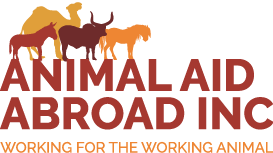Karts + KIDS 4 Donkeys - New Project for Working Donkeys and Kids in Tanzania
Mbogwen district in Tanzania has an estimate of 300 ox –yoke carts pulled by donkeys. The welfare of donkeys is as shown in a table below:
Donkey welfare ParametersScore
1. Behaviour of donkeys and response to peopleKicking is commonly seen because of owners cruelty in communicating with their donkeys. Most donkeys are whipped and beaten all the time to make them work.
2. Donkeys’ WoundsWounds are commonly seen on the neck due to yoke cart harness and on the hips due to beating.
3. Donkeys’ Body condition scoreIs 2.5 , ideal is 3.
4. Donkeys’ sign of diseases and injuriesMost of donkeys have no access to vet care
5. Owners knowledge and awarenessThe awareness of our people is little
6. Community attitude towards donkeys/beliefsThey believe that donkeys deserve beating in order to work. When they fall sick they are left to die. They believe- it is most important the load of the lord is to reach its destination no matter if the donkey dies on arrival.
7. Donkeys life spanAverage seven years.
8. Carting usedOx yoke cart 100 percent.
9. Donkey owners with interest to change harnessSome are willing.
Animal Aid Abroad will be funding TAWC to start a journey of substituting traditional carts pulled by donkeys from the neck instead of their chest. The funds will be used for training a pilot group of people in ward Masumbwe ward, involving five owning working donkeys and families with schooling children/teenagers.
Together with training, this pilot area, the fund will be used to make five carts to provide each family which meets the condition of shifting from ox- yoke cart to breast cart and his family’s kids/ teenagers will be funded with school uniforms, shoes, exercise books and text books.
The funding requires each family to contribute 70,000Tsh each toward the purchase of the cart cart and to sign an agreement of not going back to original carts.
This technology of harnessing donkeys the same as oxen, is inappropriate as donkeys necks are small not like that of oxen. The introduction of carts for donkeys to pull from the chest will eliminate neck wounds and reduce immense suffering and pain.
Activities
- Scoping and mapping areas that require new cart system along with identifying and signing agreements.
- Training a pilot group on hitching, making and operating breast collar harness carting.
- Supervising and monitoring a pilot group to overcome challenges as they rise.
- Further training a pilot group on how to make cart saddle, and straps, swingle tree etc.
- Forming a net work of changing group harness and saving a portion of their earning from donkeys to recognize the contribution of donkeys to human livelihood.
- To promote this new technology by providing incentives through school uniforms, shoes, exercise books, and text books to kids families whose donkeys change to using breast collar harness cart.
- A pilot group of five people from five families will be trained and committed to use carts pulling from the chest of donkeys.
- These five starting families will be helped a big portion of costs of a cart
- The kids / teenagers of these families will be given school uniforms, shoes, exercise books and books to access better education.
OUTCOME
- No more horrific painful wounds on donkeys necks.
- Families and kids will be happy as kids will access education through funding of necessary books, uniforms and shoes required to attend school.
- Obviously will attract other people to adopt a new way of harnessing
- The welfare of donkeys and their health will be improved.
- Appropriate cart design will be slowly adopted.
- Donkeys will live longer
- The social value of donkeys will increase and be recognized
- Kids will be ambassadors and change agents.
